August Birthstones: Peridot, Spinel and Sardonyx
August is the eighth month of the year, born under heat and light, with the lot of those born in summer being illuminated by an attribute that links them to the three beautiful birthstones: peridot, spinel, and sardonyx. Any of these gemstones equates to an undisputable distinction in character, mirroring the complete dimension of beauty when it reaches its peak in the hot, blazing month of August.
The significant life events, such as weddings, usually taking place in August, make these stones even more important. Their color defines a whole sense of the season: green foliage, romantic sunset, and warm nights of an autumn evening. Starting from deep green tones to lovely pinks or mysterious orange-and-black compositions, these stones have a special position among the jewelry pieces.
Whether they mine them or make them, these August Birthstones are in great demand and are always much sought after - especially for that dream engagement ring, that promise ring, and bracelet. Symbolic and beautiful, they stand for those qualities.
Table of Contents
▼
History of August Birthstones
August birthstones have long captured hearts, blending myth, history, and magic. Linked to the months, these gems aren’t just pretty—they carry deep symbolism.
The idea of birthstones traces back to biblical times, particularly Aaron’s breastplate in the Book of Exodus, which had twelve gems representing Israel’s twelve tribes. These weren’t just decorative; they were believed to possess mystical powers tied to zodiac signs and months.
In ancient times, wearing your birthstone wasn’t just fashionable—it was magical! January’s garnet supposedly protected against poisoning, while February’s amethyst? It kept you from getting too tipsy. Cultures everywhere, from Egyptians to Greeks, believed these gems could protect or bless.
By 1912, birthstones got an official list from the American National Retail Jewelers Association. Gems like diamonds, emeralds, and rubies were assigned to months, chosen for their beauty and significance.
Birthstone jewelry? A timeless favorite. Giving someone their birthstone is a heartfelt way to say, "I care." Whether it's a pink spinel for an August gift or a peridot necklace for a birthday, birthstones add that extra special touch.
Today, August birthstones still sparkle in rings, necklaces, and more. They’re symbols of personal connection and timeless style.
Peridot: First August Birthstone

The bright green birthstone for August, peridot has been considered a valuable gemstone due to both its physical beauty and mythological powers for thousands of years. Here is a brief overview of the origin of the gemstone and how it has been used customarily.
History of Peridot: Ancient Devotion
Peridot history dates back to ancient Egypt, when it was known as the gem of the sun. It was believed to offer protective powers, and its bright green color was viewed as a divine gift through necklaces and amulets. Peridot had been highly valued in ancient Rome for both brilliance and clarity and was often set into rings and luxury ornaments.
Peridot is an age-old healing stone that has been said for a long time to ward off evil spirits and bad dreams. This stone symbolizes rebirth and growth, giving strength and energy. In medieval Europe, it was believed that it would help with mental clarity and emotional healing by cleansing stress and anxiety.
Modern Recognition and Revival of Peridot
The love for Peridot has carried into modern times, and the expansion of the knowledge regarding gemology has further increased its popularity. Today, this stone is known for its beautiful color and properties and is an important August birthstone. It has remained one of the favorites because, relatively, it is less expensive compared to other gemstones.
Astrological and Cosmic Significance of Peridot
Peridot is a zodiac stone for Leo and Virgo. Leo, being the sign of the sun, is surely drawn to the "gem of the sun," while the analytical and practical Virgo would respond to the aspect of the ability of Peridot to ward off emotional turmoil and give clarity of thought.
Astrologically, Peridot also corresponds to the planet Venus, representing love, beauty, and prosperity. For ages, it was believed to repel bad vibes, giving a feeling of rebirth to its wearer.
How peridot is associated with strength and renewal
Qualities of strength and renewal associated with peridot include the following:
Emotional Healing:
Negative emotions, such as feelings of guilt, jealousy, and resentment are a balm peridot has to offer, radiating an aura which promotes a positive attitude and enhances personal growth.
Stress Relief:
Peridot stress-reducing energy dissolves the stress and anxiety and it becomes easy to overcome problems that set the resilience of the mind on rise. Believed to promote the health of one's body, peridot increases the body's vigor and strengthens the immune system while helping the process of digestion and metabolic efficiency.
Spiritual Awareness:
Peridot enhances the ability for spiritual awareness and intuition. It inclines one to have an openness for new thoughts and experiences, thus awakening this renewal in spiritual journeys.
Heart Chakra Activation:
Being associated with the heart chakra, peridot encourages love, compassion, and emotional balance, creating healthier and stronger connections among people, whilst reminding one of renewal in personal relationships.
Only wise to say here that if history declares that Peridot is a protector, by the process of science, it cannot be proven. So many still believe that this heirloom would give a person mental clearness and emotional balance but its protective qualities stay stashed in folklore rather than verifiable data.
Spinel: Second August Birthstone

Spinel has long been overshadowed by other gemstones, often mistaken for ruby due to its vivid red hue. In recent years, however, it has gained recognition as one of the official August birthstones, offering a fresh alternative to the more traditional Peridot and Sardonyx.
The Rich History of the Spinel Birthstone
Spinel has a long and storied history that has captivated civilizations for centuries. Unlike many gemstones that were appreciated mainly for their rarity, spinel was often mistaken for other, more famous gems like rubies and sapphires. In fact, many of the most renowned "rubies" in royal collections are actually spinels.
One of the most famous examples is the "Black Prince's Ruby," a 170-carat red spinel that now adorns the Imperial State Crown of England. Historical records indicate that this gemstone was first owned by a 14th-century Spanish king and later passed through the hands of several European royals before becoming part of the British Crown Jewels.
Another significant spinel is the "Timur Ruby," a 352-carat red spinel mistakenly thought to be a ruby. This gem, linked to the 14th-century conqueror Timur (Tamerlane), has a history steeped in royalty and conquest, reflecting spinel’s unique place in the world of precious stones. Unlike diamonds and rubies, which were mainly prized for their durability, spinel was valued for its deep, radiant colors and clarity.
The Origins of Spinel
Spinel gemstones are mined in some of the world's most famous mining areas. Historically, one of the most famous sources was the Badakhshan region in today's Tajikistan for deep red spinels. The mines from the region have been producing fine spinel gems for over a thousand years, and in fact, their gemstones are considered some of the finest in the entire world.
Of course, the second source for this red and pink colour of spinels is the Mogok Valley in Myanmar. Color and clarity in these stones are exceptional while trying to attract much attention from collectors and jewelers.
Luc Yen, Vietnam: Cobalt Blue Spinel Within this region, cobalt blue spinels are extremely rare in terms of their very vivid coloration. New deposits have recently been found in Madagascar, Tanzania, Sri Lanka, and Kenya, which has greatly increased the supply and range of colored spinel available.
The Stunning Color Variations of Spinel

Beautiful, natural-colored varieties of spinel are in abundance, requiring no enhancements. Individually, each color exhibits the most pure expression of natural beauty.
Red Spinel:
The color range of spinel reds spans from scarlet to deep crimson - extremely desirable, especially if they are from Myanmar's Mogok Valley. Its bright color and clarity make it a very in-demand stone.
Blue Spinel:
Oceanic blues to cobalt tones. Blue spinels are often mistaken with sapphires. Velvety textured, rich color examples from Vietnam's Luc Yen area are extremely rare. Pink Spinel: Soft rose to vivid fuchsia. The delicate romantic tones make it perfect for tiny, dainty necklaces or small simple engagement rings.
Purple Spinel :
Lavender to deep plum in color, purple spinel is a royal stunner. Due to its elusive nature, this spinel is chosen by those people looking for exclusive jewelry.
Orange Spinel :
From peach to tangerine color, bright orange spinels are among the most coveted in modern jewelry design due to their bright vibrant hues.
Black Spinel :
Deep opaque black, black spinel reeks mystery and sophistication, often taken as a substitution for black diamonds.
Green Spinel:
Fresh mint to forest green spinels convey a wonderful sense of serenity in nature. They are scarce, and hence the availability in the market is limited, and as such very much in demand by the collector's fraternity.
Gray Spinel:
Silvery gray to dark charcoal gray spinel is a subtle elegance suited to modern designs in minimalist jewelry pieces.
Traditional Uses of Spinel: Symbolism and Protection
Traditionally, the Spinel was worn for the supposed protection it offered. Ancient warriors and kings would wear Spinel because it is believed that Spinel could protect a warrior in battle and give him the courage to stand back up again after falling. As many different cultures believe, even in medieval Europe and Asia, Spinel was thought to protect the wearer from evil deeds. In Chinese tradition, it connects with mental clarity and emotional stability when it comes to managing stress..
Modern Recognition and Revival of Spinel
Spinel first emerged in the 18th century as a recognized gemstone. Today, it has joined an official list of birthstones under the auspices of the American Gem Trade Association and as one of the birthstones for the month of August, dating to 2016. This increased its popularity among collectors and gem enthusiasts, thereby contributing to higher demands and appreciation in the fine jewelry market.
Astrological Connections of Spinel
Spinel is associated with the zodiac signs Leo and Scorpio. For Leo, Spinel provides strength and vitality, resonating with their natural leadership qualities. For Scorpio, it is seen as a stone of renewal, helping them recover from emotional or physical challenges.
The stone’s connection to the planet Mars gives it an association with energy, passion, and endurance. This is why Spinel is often recommended for individuals going through life transitions or those seeking protection from emotional fatigue.
Healing and Metaphysical Properties of Spinel
In the realm of metaphysics, Spinel is believed to provide clarity and enhance focus. While there is no empirical data to back these claims, many who practice crystal healing attest to its calming and protective effects. It is said to ground emotional energies, making it a popular choice for those seeking balance in stressful times.
Sardonyx: Third August Birthstone

The August birthstone is very intriguing and has a storied past, including its very dramatic appearance. The stone is a layered type, alternately banded in reddish-brown, white, black, and even blue. Cultures around the world have prized it for their precious purposes. Sardonyx is said to be a stone of courage, protection, and strength. That makes it a meaningful choice for August-borns or anybody who loves its beauty and the symbolism connected to it.
The Meaning and Symbolism of Sardonyx
The name "sardonyx" is derived from the Greek words "sard," meaning reddish-brown chalcedony and "onyx," which means black chalcedony. Throughout thousands of years, this gemstone is believed to be a powerful talisman; it gives people the spirit of courage, protects them from negative influence, and provides good communication with others. The unique layering of this stone symbolizes strength through adversity as each layer develops overtime to add depth and character to the stone.
Today, sardonyx is valued for its metaphysical properties, which are generally related to a disciplined personality with self-confidence and inner strength. It is said to invoke motivation, discipline, and stability in a person, making it one of the most sought after stones for such a personality type.
A Journey Through Sardonyx's Rich History
Sardonyx has been valued for its beauty and symbolic meaning in the annals of time. The ancient Egyptians used it for their protective amulets, seals, and talismans engraved with hieroglyphics.
In Rome, a common product was a cameo and intaglio made from sardonyx. For the Roman soldier, the stone was believed to help him in winning battles and have the courage to face other warriors. Orators wore sardonyx so they could speak with eloquence.
Sardonyx was said in the olden days to give strength and even courage-it was often worn by warriors as they sought protection during battles in ancient Greece. Sardonyx appeared to check negative energies and to clear thinking; thus, it took a place in the esteem of scholars and clergy in medieval Europe.
Coming through to the Renaissance and the Victorian era, sardonyx came into favor for cameos, mourning jewelry, and religious insignia. Sardonyx is highly valued today in modern jewelry and healing practices, mostly as a stone that would offer crystal clarity of communication and emotional stability.
The Many Origins and Varieties of Sardonyx
Sardonyx is found in various regions around the world. Each different region offers a special type of it. There is red-and-white banded sardonyx from India which is often employed for traditional jewelry. Vibrant reddish-brown, black, and white stones from Brazil are in demand because they display clear banding.
Brownish-red and white layers from the Idar-Oberstein region in Germany are widely used in carvings and cameos. A new source for this stone is Madagascar, which offers stones with fantastic vibrant colors and remarkable patterns that make them incredibly sought after by collectors.
Types of Sardonyx

Sardonyx comes in various colors, each carrying its own unique symbolism and properties:
Red Sardonyx:
Known for its deep reddish-brown and white bands, red sardonyx is believed to symbolize courage, protection, and strength. It is often worn by those seeking to boost their self-confidence and overcome fears.
Black Sardonyx:
Featuring layers of black and white or reddish-brown, black sardonyx is associated with grounding, stability, and protection. It is a popular choice for cameos and other carved jewelry pieces.
White Sardonyx:
Primarily composed of white bands, often layered with black or reddish-brown, white sardonyx is thought to promote mental clarity, purity, and balance. It is favored by those seeking to enhance focus and clear communication.
Carnelian Sardonyx:
Distinguished by its bright orange bands, carnelian sardonyx is said to encourage creativity, vitality, and energy. This type of sardonyx is ideal for those looking to boost their motivation and passion.
Blue Sardonyx:
A rare variety, blue sardonyx features layers of white or black stone with blue bands. It is believed to foster calmness, communication, and emotional balance, making it a good choice for meditation and spiritual practices.
Caring for August Birthstone Jewelry
To maximize beauty and long-term life in your sardonyx jewelry, consider these tips:
Cleaning:
To clean your jewelry, it is better to soak it in a solution of mild soap and warm water. Avoid harsh chemicals because they may damage the stone. Use a soft brush, like your toothbrush, to gently wash around the banding and then rinse.
Drying:
Clean Pat dry on a soft, lint-free cloth. Do not use abrasive materials such as paper towels that can cause the surface to scrape away. Make sure the jewelry is dried out before storing it or wearing it.
Storage
Storage of jewelry should be separate in order to prevent scratching. These are best stored in soft pouches or compartments within a jewelry box. Never expose it to direct sunlight or extreme temperatures as these could affect the color or the durability of the stone.
Chemicals to Avoid
Never expose stones to harsh chemical agents, household cleaners, bleach or other acidic agents. Never wear your sardonyx jewelry in chlorinated pools because chlorine dulls the stone.
Accessories Inspection:
Regular visual check-up for your jewelry on its stone, to make sure that this is always well-situated. Avoid jewelry if you'd be engaging yourself into activities with high impact or potential damaging to your jewelry such as sports and heavy lifting activities.
Professional Care:
Consider having your jewelry professionally cleaned and inspected annually, checking for loose settings or damage to the piece.
Never Use Ultrasonic Cleaners
Avoid ultrasonic cleaners. Vibrations can damage sardonyx, particularly if there are surface-reaching fractures in the stone.
Conclusion
The birthstones of August—peridot, spinel, and sardonyx—all carry a certain uniqueness in terms of charm and meaning. Peridot flashes in vibrant green, signifying protection and prosperity. Spinel, seen in an array of colors, gives this stone additional versatility, while the sardonyx, flaunting its bold red, brown, and white bands, represents to anybody; strength and courage.
Whether it's a birthday or an anniversary, one of these gems can make any gift worthwhile. The peridot presents rich green glow and the spinel boasts of its multiplicity in colors while the sardonyx displays beautiful patterns. One of each of these beauties can epitomize August.

.png?v=74971505631319126241739980080)

.png?v=170379015109479064061739980109)
 Solitaire Ring
Solitaire Ring
 Accent Ring
Accent Ring
 Halo Ring
Halo Ring
 Bridal Set
Bridal Set
 Toi-Moi Rings
Toi-Moi Rings
 Three Stone Ring
Three Stone Ring
 Five Stone Ring
Five Stone Ring
 Pave band
Pave band
 Eternity Band
Eternity Band
 Bezel Set
Bezel Set
 Channel Set
Channel Set
 Studs and Earrings
Studs and Earrings
 Bracelet
Bracelet
 Necklace
Necklace
 Men's jewelry
Men's jewelry
 Brilliant
Brilliant
 Old Cut
Old Cut
 Step Cut
Step Cut
 Matching Pair
Matching Pair
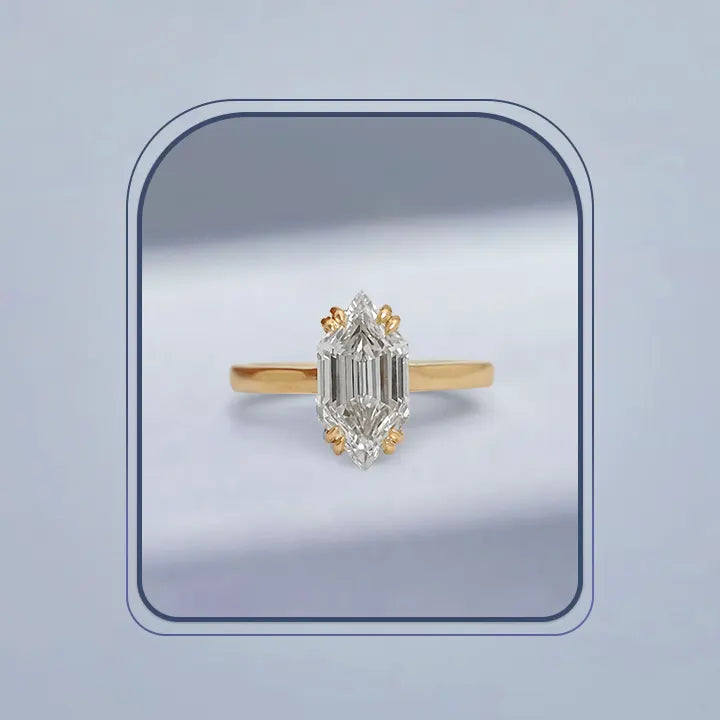
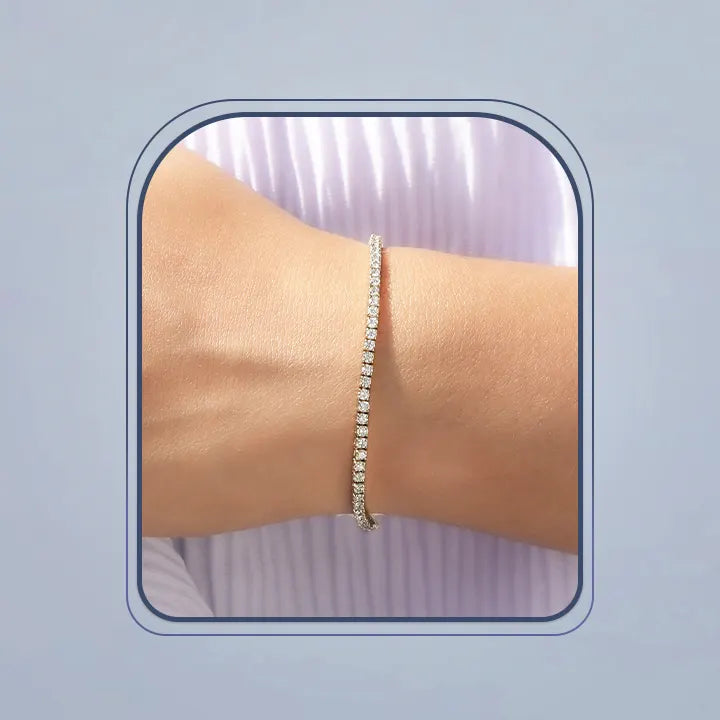
 Vintage Ring
Vintage Ring
 Dainty Band
Dainty Band
 Gemstone Jewelry
Gemstone Jewelry
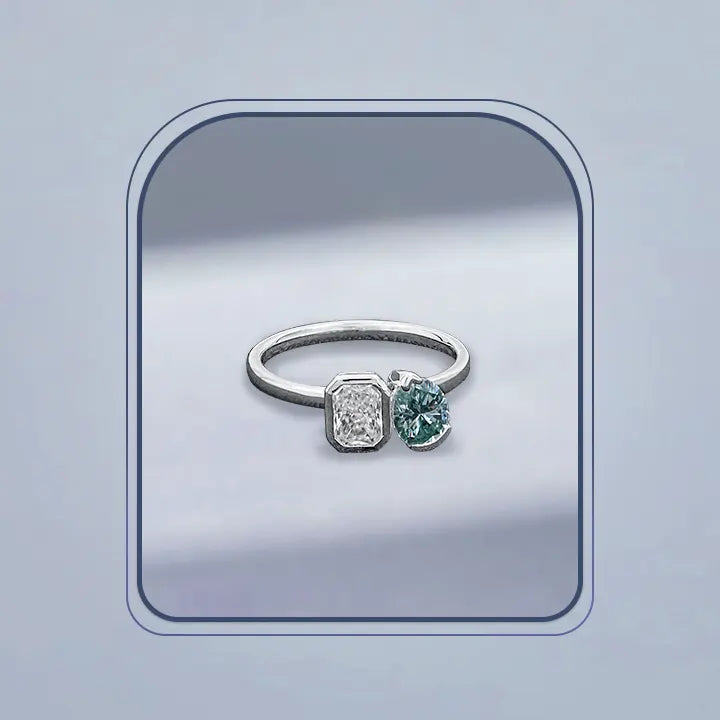
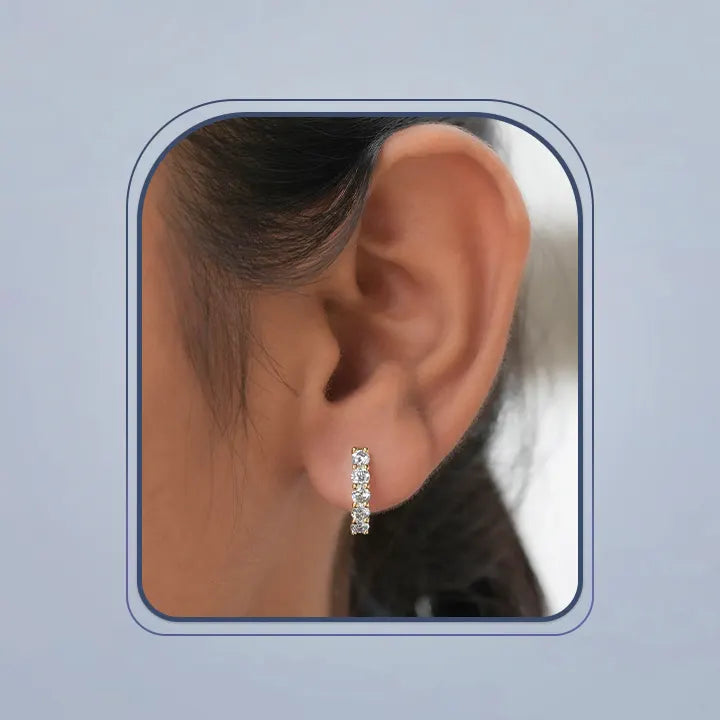
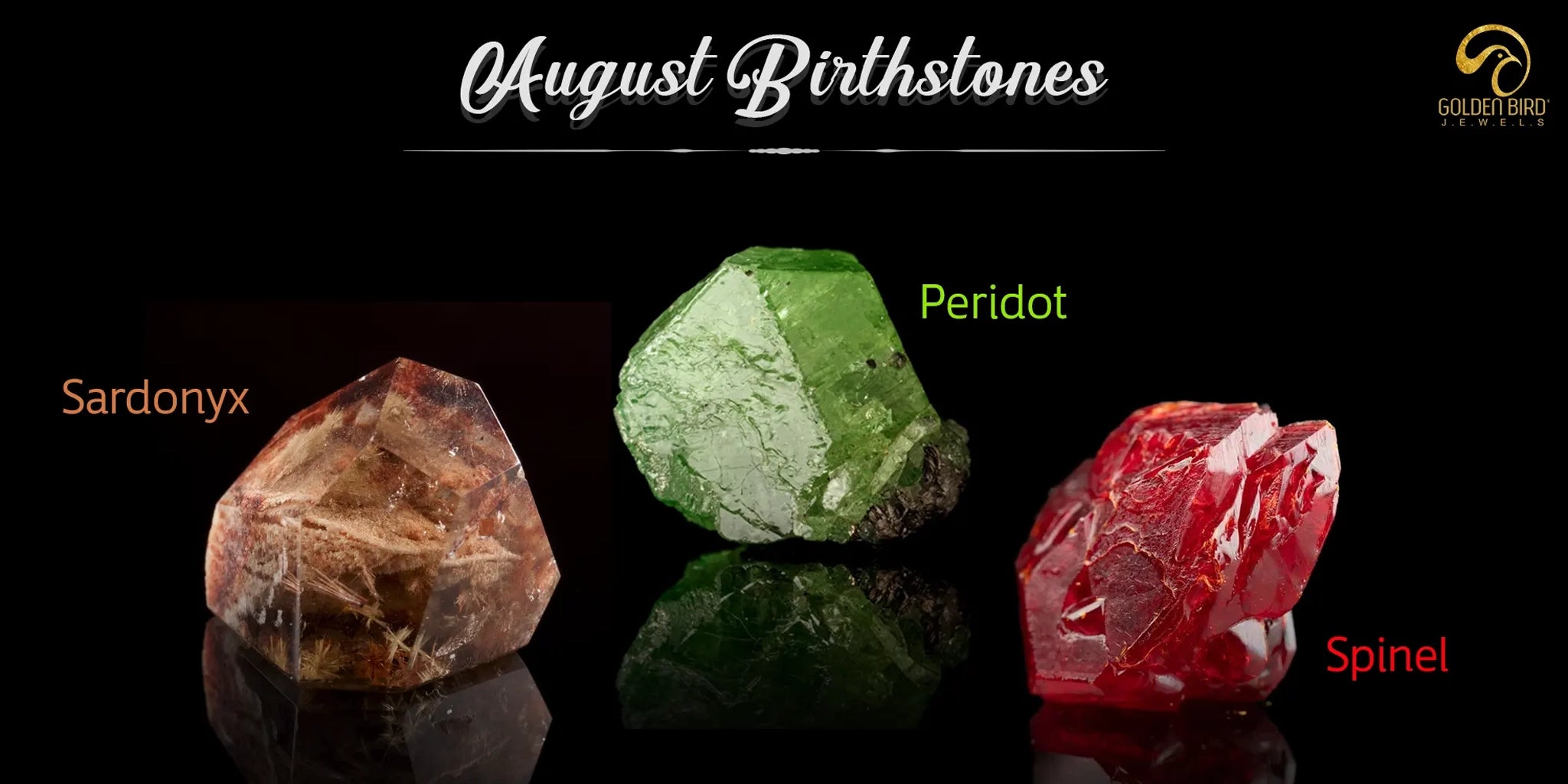
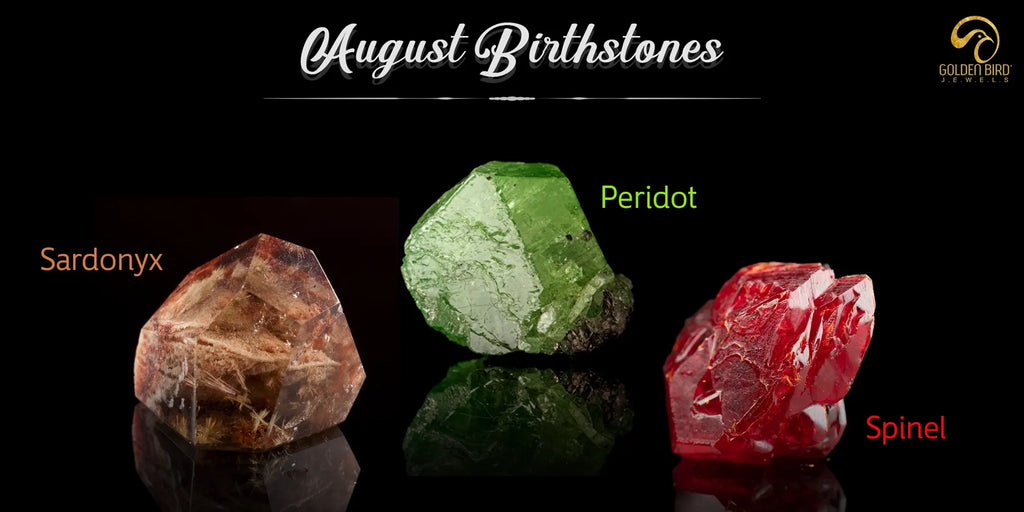




![[Which hand to wear a promise ring]-[Goldenbird Jewels]](http://www.goldenbirdjewels.com/cdn/shop/articles/Which_hand_to_wear_a_promise_ring_1024x1024.webp?v=1735388893)
![[How To Care For Your Moissanite Engagement Ring]-[Goldenbird Jewels]](http://www.goldenbirdjewels.com/cdn/shop/articles/banner_image_1_1024x1024.jpg?v=1735364626)

![Image of engagement ring and wedding band with couple indulging in romance at the beach, [Text] Engagement ring and wedding band, whiich goes first](http://www.goldenbirdjewels.com/cdn/shop/articles/Banner_Image_2_1024x1024.webp?v=1735283814)

![two emerald rings by goldenbird jewels, showcasing in sleek grey background, with jewelry box, [Text] Emerald ring style for 2025](http://www.goldenbirdjewels.com/cdn/shop/articles/10_Emerald_Ring_Styles_for_2025_Main_Banner_2048X1024_08ce3abe-68fd-4164-8e84-630ea85fe82c_1024x1024.webp?v=1735044302)

